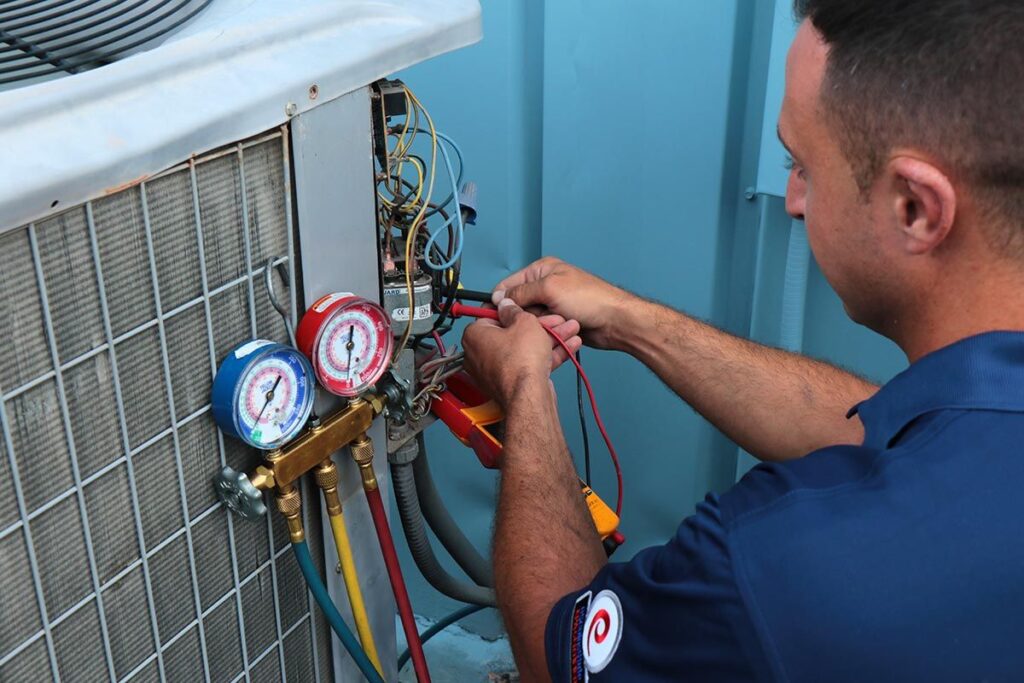Heating, HVAC, and climate control, commonly known as HVAC, is a critical part of modern life that many people often overlook. From the comfortable warmth of a heated home in winter to the crisp air of air conditioning during sweltering summers, HVAC systems play a crucial role in our well-being and contentment. The history of HVAC is a remarkable saga that showcases human ingenuity and technological advancements over the decades, transforming the way we manage our indoor environments.
As we delve into the evolution of HVAC, we will explore how these systems originated, their progress through the years, and the improvements that have shaped today's heating and cooling solutions. Whether you are a resident looking to upgrade your system or a entrepreneur seeking effective climate control, understanding the history and function of HVAC is key to making wise decisions. Follow us as we uncover the significant events in HVAC history and how they relate to the ease and efficiency of our living and business spaces.
Comprehending HVAC Systems
HVAC, which refers to heat, ventilation, and cooling, is a vital system in both residential and business structures. Its primary purpose is to provide comfort by regulating indoor heat levels, managing humidity levels, and guaranteeing good air standard. These systems merge various methods to enable warmth during colder seasons and cooling during warmer months, making them vital for year-round comfort.
The parts of an HVAC setup typically include a heater or heat generator for heating, an cooling unit for cooling, air ducts for circulating conditioned air, and airflow systems to introduce fresh air and expel used air. Advances in HVAC technology have led to improved energy efficiency and more control over warming and cooling settings, often featuring intelligent technology that enables property owners and businesses to optimize their energy consumption and reduce costs.
An optimal HVAC setup not only boosts comfort but also plays a significant role in upholding indoor air standards. By filtering and circulating air, these systems reduce allergens and pollutants, which is especially vital for individuals with breathing conditions. Proper understanding and maintenance of HVAC systems can result in a healthier living space and more efficient functioning, eventually saving energy and lowering utility expenses.

HVAC Care and Efficiency
Consistent care of your HVAC equipment is essential for ensuring its effectiveness and durability. A properly cared for system not only operates optimally but can also lead to substantial savings on utility bills. Basic upkeep tasks include changing air filters regularly, cleaning air passages, and inspecting the thermostat settings. By keeping these components in good condition, you can eliminate unnecessary strain on the system, which often results in expensive repairs and inefficient energy use.
In alongside regular upkeep, periodic maintenance is key for enhancing your system's effectiveness. Spring and autumn are optimal times to schedule qualified tune-ups, as these seasons typically involve transitioning between heating and and cool modes. https://mccray-frantzen-2.hubstack.net/the-value-of-indoor-air-standards-how-hvac-makes-a-role can evaluate various components, such as refrigerant levels, electrical hookups, and motor functions, ensuring that your system operates effectively when it is needed the most. Ignoring these seasonal check-ups can lead to unforeseen breakdowns when weather rise or drop.
Improving the efficiency of your HVAC unit can also be achieved through smart technology and upgrades. Implementing a programmable thermostat enables better temperature control according to your schedule, cutting energy consumption when you are away. Moreover, think about investing in energy-efficient appliances or divided heating and cooling solutions. Over time, these improvements can greatly improve system efficiency, reduce your carbon footprint, and lead to considerable cost savings on utility bills.
Innovations in HVAC Technology
The HVAC field has seen noteworthy tech innovations over the time, leading to increased effectiveness and better comfort for customers. Smart thermostats are a key advancement, allowing users to control their heating and cooling systems via smartphone apps. These devices learn user settings and modify settings without input, resulting in lowered energy consumption and decreased utility bills. Additionally, compatibility with automated home systems enables smooth control of HVAC with other automated devices, enhancing overall convenience.
Another innovation in HVAC technology is the creation of variable refrigerant flow systems. These units enable accurate temperature control and effective functioning by controlling the amount of refrigerant flowing to internal units based on demand. This versatility not only improves comfort but also considerably reduces energy usage compared to older systems. Innovations in split HVAC systems have made climate control more feasible for residences without existing ductwork, allowing for tailored climate control in specific spaces.
Geothermal HVAC solutions represent another advanced solution in HVAC systems. By harnessing the earth's stable ground temperature, these systems can provide efficient heating in the winter and cooling in the summer, often with meaningful energy savings. The starting expenses may be more, but the long-term advantages include reduced utility costs and a reduced carbon footprint. As technology continues to advance, HVAC systems are becoming more advanced, even more efficient, and better aligned with sustainable practices, defining the future of climate technologies.
